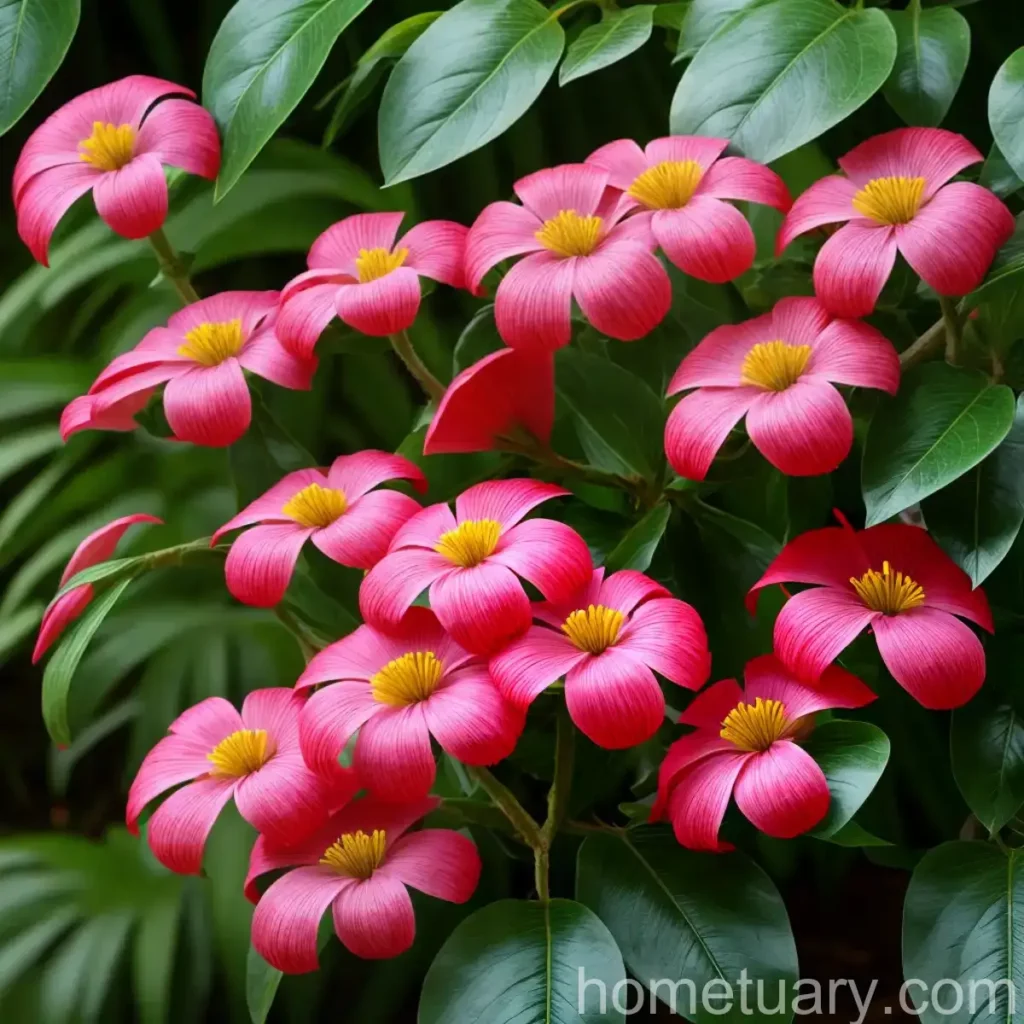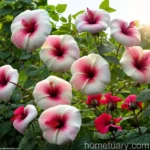The Beautiful and Versatile Pavonia – A Complete Guide for Plant Enthusiasts
What is Pavonia (Pavonia cymbalaria)?
Pavonia cymbalaria, commonly known as pavonia, is a stunning and versatile plant species that belongs to the Malvaceae family. This plant is native to Mexico and Central America, where it thrives in a variety of environments, from tropical forests to arid regions. The pavonia plant is treasured for its delicate, funnel-shaped flowers and attractive foliage, making it a popular choice for gardeners and landscapers.
Key Takeaways
Here are some key points to remember about pavonia (Pavonia cymbalaria):
- The pavonia plant is prized for its lush foliage and vibrant flowers, making it an excellent choice for adding color and texture to gardens and indoor spaces.
- This versatile plant can thrive in various conditions, including both indoor and outdoor environments, making it a valuable addition to any plant lover’s collection.
- With proper care and maintenance, pavonia can be grown successfully in containers, making it suitable for those with limited gardening space.
- This plant is not only visually appealing but also serves as a habitat and food source for beneficial insects and pollinators, contributing to the overall health of the ecosystem.
Now that we have an overview of pavonia, let’s delve into the specifics of its care and cultivation.
Culture
Uses
Pavonia (Pavonia cymbalaria) is valued for its multiple uses, including:
- Ornamental Purposes: The attractive blooms and foliage of pavonia make it a popular choice for ornamental gardens, adding color and visual interest to landscapes and indoor spaces.
- Habitat for Wildlife: The plant serves as a habitat and food source for various beneficial insects, birds, and pollinators, contributing to the biodiversity of the surrounding environment.
- Medicinal Uses: In some traditional medicinal practices, parts of the pavonia plant are utilized for their potential therapeutic properties.
Care Requirements
The successful cultivation of pavonia depends on providing the optimal growing conditions and care. When it comes to its care requirements, focus on the following aspects:
Water
Proper watering is essential for the health and vitality of pavonia. Here are some guidelines for watering pavonia plants:
- Consistent Moisture: Pavonia plants prefer consistently moist, well-draining soil. Avoid allowing the soil to become excessively dry between watering sessions.
- Adjusting Watering Frequency: While pavonia requires regular watering, adjustments should be made based on environmental conditions and the plant’s growth stage.
Sunlight
Proper sunlight exposure is crucial for the growth and blooming of pavonia. Consider the following when providing sunlight to pavonia plants:
- Optimal Light Levels: Pavonia thrives in partial to full sunlight. Ensure that the plant receives adequate light to support its growth and flowering.
- Indoor Placement: When grown indoors, place pavonia in a location that receives bright, indirect sunlight to mimic its preferred outdoor conditions.
Fertilizer
To encourage robust growth and blooming, providing the right fertilization is essential. Consider the following points for fertilizing pavonia plants:
- Balanced Fertilizer: Use a balanced, water-soluble fertilizer formulated for flowering plants to provide essential nutrients to pavonia.
- Frequency: Fertilize pavonia plants during the growing season at regular intervals, following the manufacturer’s recommendations for application.
Soil
The choice of soil and its quality greatly impacts the health and growth of pavonia plants. Consider the following soil recommendations for pavonia:
- Well-draining Soil: Plant pavonia in well-draining soil to prevent waterlogging, which can lead to root rot and other issues.
- Organic Matter: Incorporate organic matter into the soil to promote a healthy soil structure and provide essential nutrients to the plant.
Pruning
Pruning is an important aspect of pavonia plant care, contributing to its overall health and appearance. Here are some key points to remember about pruning pavonia:
- Deadheading: Regularly remove spent blooms to encourage continual flowering and maintain the plant’s aesthetic appeal.
- Trimming and Shaping: Prune pavonia to control its size and shape, promoting a compact and tidy growth habit.
Propagation
Whether you want to expand your pavonia collection or share this beautiful plant with others, propagation is an essential aspect of its cultivation. Consider the following methods for propagating pavonia:
Propagation from Cuttings
- Select a healthy stem tip with several pairs of leaves, and trim it just below a node.
- Remove the lower leaves to expose the nodes where roots will develop.
- Plant the cutting in a well-draining rooting medium and keep it consistently moist until new roots develop.
Container Popularity
Pavonia’s versatility and adaptability make it a popular choice for container gardening. Here are a few reasons why pavonia is well-suited for container cultivation:
- Space Efficiency: Ideal for small gardens and balconies, pavonia thrives in containers, enabling urban gardeners to enjoy its beauty.
- Portability: Container-grown pavonia can be easily relocated to different areas to optimize sunlight exposure and aesthetic appeal.
- Indoor Cultivation: Suitable for indoor settings, pavonia adds a touch of nature to interior spaces, enhancing the overall ambiance.
Common Diseases and Pests
Despite being a resilient plant, pavonia is susceptible to certain diseases and pests. It’s crucial to recognize the signs of common issues and take appropriate measures for prevention and control.
Disease Diagnosis
Keep an eye out for the following common diseases that can affect pavonia plants:
- Powdery Mildew: Characterized by a powdery white coating on the leaves, powdery mildew can weaken the plant and inhibit its growth.
- Root Rot: Overwatering and poorly-draining soil can lead to root rot, causing the plant to wilt and show signs of decline.
- Leaf Spot: Dark or discolored spots on the leaves indicate the presence of leaf spot diseases, which can affect the plant’s vigor.
Common Pests
Keep an eye out for the following pests that may infest pavonia plants:
- Aphids: These tiny, sap-sucking insects can cluster on the plant’s tender growth, causing distortion and yellowing of the leaves.
- Spider Mites: When present in large numbers, spider mites can create fine webbing and cause stippling on the foliage, leading to a decline in the plant’s health.
Botanist’s Tips
Leverage the following expert tips to ensure the successful cultivation and care of pavonia:
- Monitor Soil Moisture: Regularly check the soil moisture to strike the right balance between adequate hydration and avoiding waterlogged conditions.
- Mulching: Apply a layer of organic mulch around the base of pavonia plants to conserve moisture, suppress weed growth, and provide a source of nutrients as the mulch decomposes.
- Companion Planting: Pair pavonia with compatible plant species to create visually appealing and ecologically beneficial garden settings.
Fun Facts
Here are some fascinating tidbits about pavonia (Pavonia cymbalaria) that might pique your interest:
- Attracts Hummingbirds: The vibrant blooms of pavonia are known to attract hummingbirds, adding an interactive and dynamic element to the garden.
- Beneficial Insects: The presence of pavonia can support populations of beneficial insects such as butterflies and bees, contributing to the overall ecological balance.
Links to External Resources
As you continue to explore the world of pavonia plants, here are some valuable external resources to expand your knowledge and expertise:
- Royal Horticultural Society – Growing Guide: Pavonia
- University of Florida – Pavonia cymbalaria Fact Sheet
- American Society for the Prevention of Cruelty to Plants – Pavonia Care Tips
- Gardening Know How – Guide to Growing Pavonia Plants
Conclusion
Pavonia (Pavonia cymbalaria) stands out as a captivating and adaptable plant species that offers a myriad of ornamental, ecological, and horticultural benefits. Whether you’re a seasoned gardener or a novice enthusiast, the allure of pavonia and its cultivation possibilities are truly worth exploring. By incorporating the insights shared in this comprehensive guide, you can embark on a rewarding journey of cultivating and appreciating the beauty of pavonia in various settings, from gardens and landscapes to indoor spaces. As you continue your exploration, let the timeless charm of pavonia inspire your gardening endeavors, for it is a testament to the intrinsic harmony between nature and our nurturing hands.
Expand your horizons, and embrace the world of pavonia, where beauty flourishes and nature’s wonders unfold in vibrant splendor.















